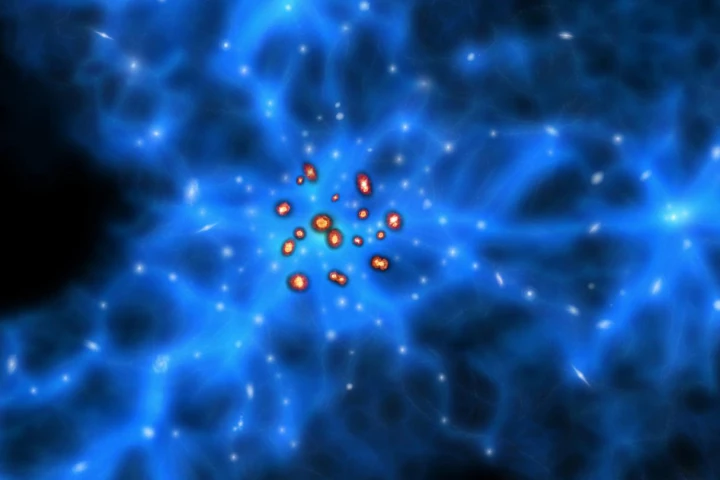NAOJ
-
Radioactive isotopes found in meteorites suggest a supernova went off right near the Sun as it was forming – but that should have blasted the young solar system away. So how did we survive? A new study proposes an explanation.
-
Every planet we know of orbits a star – but that might not be a universal rule. According to calculations by researchers at NAOJ, planets could technically form around supermassive black holes, creating vast planetary systems of thousands of worlds.
-
Astronomers have discovered a star in the Milky Way that doesn’t belong. Known as J1124+4535, the star has a chemical composition unlike any others ever observed in our home galaxy, suggesting it’s an intergalactic interloper that may have come from a dwarf galaxy swallowed up by the Milky Way.
-
Black holes tend to fall into two categories: fairly small or supermassive. It’s long been believed that there should be a middle class, and in recent years astronomers have found evidence of these “intermediate mass” black holes. Now a Japanese team has located one near the center of the Milky Way.
-
A team at the National Astronomical Observatory of Japan has discovered a new class of object that has long been thought to exist in the Kuiper belt on the fringes of the solar system. It's a small body on the scale of a few kilometers.
-
A team of Japanese astronomers has used the Atacama Large Millimeter/submillimeter Array (ALMA) to spot a group of huge, youthful galaxies in the distant Universe. The discovery helps us to understand the formation of such galaxies, and how they evolve into the elliptical galaxies we see today.
-
To show off the capabilities of the new Hyper-Suprime Cam (HSC) on Mauna Kea, Hawaii, researchers have released high resolution images of the Andromeda galaxy that not only show off incredible detail, but may help shed light on the evolution of the Universe and the distribution of dark matter.






